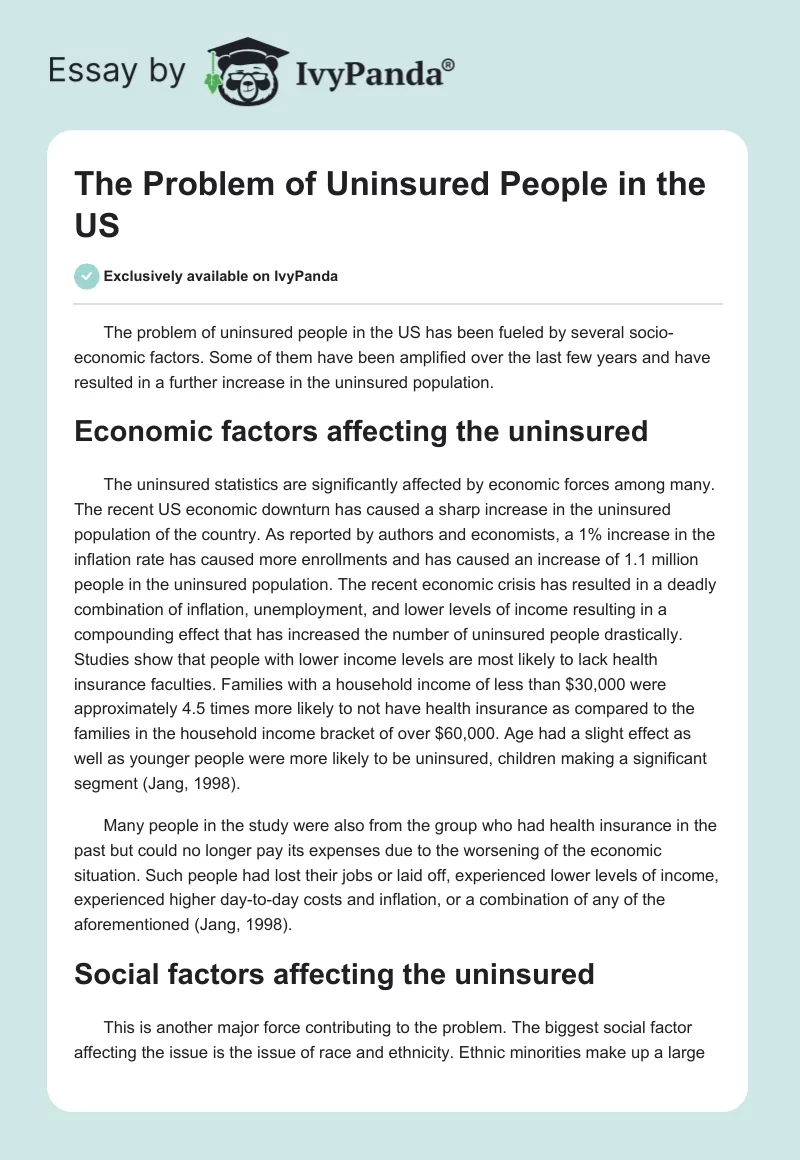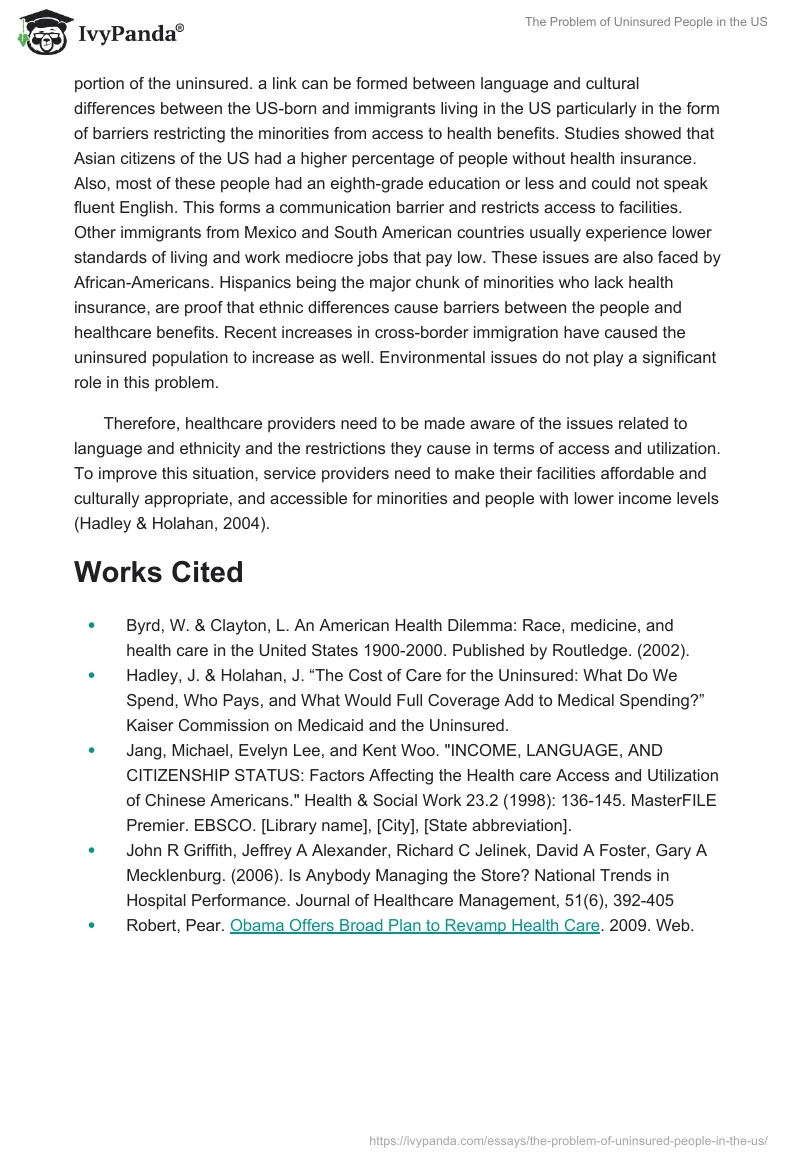The problem of uninsured people in the US has been fueled by several socio-economic factors. Some of them have been amplified over the last few years and have resulted in a further increase in the uninsured population.
Economic factors affecting the uninsured
The uninsured statistics are significantly affected by economic forces among many. The recent US economic downturn has caused a sharp increase in the uninsured population of the country. As reported by authors and economists, a 1% increase in the inflation rate has caused more enrollments and has caused an increase of 1.1 million people in the uninsured population. The recent economic crisis has resulted in a deadly combination of inflation, unemployment, and lower levels of income resulting in a compounding effect that has increased the number of uninsured people drastically. Studies show that people with lower income levels are most likely to lack health insurance faculties. Families with a household income of less than $30,000 were approximately 4.5 times more likely to not have health insurance as compared to the families in the household income bracket of over $60,000. Age had a slight effect as well as younger people were more likely to be uninsured, children making a significant segment (Jang, 1998).
Many people in the study were also from the group who had health insurance in the past but could no longer pay its expenses due to the worsening of the economic situation. Such people had lost their jobs or laid off, experienced lower levels of income, experienced higher day-to-day costs and inflation, or a combination of any of the aforementioned (Jang, 1998).
Social factors affecting the uninsured
This is another major force contributing to the problem. The biggest social factor affecting the issue is the issue of race and ethnicity. Ethnic minorities make up a large portion of the uninsured. a link can be formed between language and cultural differences between the US-born and immigrants living in the US particularly in the form of barriers restricting the minorities from access to health benefits. Studies showed that Asian citizens of the US had a higher percentage of people without health insurance. Also, most of these people had an eighth-grade education or less and could not speak fluent English. This forms a communication barrier and restricts access to facilities. Other immigrants from Mexico and South American countries usually experience lower standards of living and work mediocre jobs that pay low. These issues are also faced by African-Americans. Hispanics being the major chunk of minorities who lack health insurance, are proof that ethnic differences cause barriers between the people and healthcare benefits. Recent increases in cross-border immigration have caused the uninsured population to increase as well. Environmental issues do not play a significant role in this problem.
Therefore, healthcare providers need to be made aware of the issues related to language and ethnicity and the restrictions they cause in terms of access and utilization. To improve this situation, service providers need to make their facilities affordable and culturally appropriate, and accessible for minorities and people with lower income levels (Hadley & Holahan, 2004).
Works Cited
- Byrd, W. & Clayton, L. An American Health Dilemma: Race, medicine, and health care in the United States 1900-2000. Published by Routledge. (2002).
- Hadley, J. & Holahan, J. “The Cost of Care for the Uninsured: What Do We Spend, Who Pays, and What Would Full Coverage Add to Medical Spending?” Kaiser Commission on Medicaid and the Uninsured.
- Jang, Michael, Evelyn Lee, and Kent Woo. “INCOME, LANGUAGE, AND CITIZENSHIP STATUS: Factors Affecting the Health care Access and Utilization of Chinese Americans.” Health & Social Work 23.2 (1998): 136-145. MasterFILE Premier. EBSCO. [Library name], [City], [State abbreviation].
- John R Griffith, Jeffrey A Alexander, Richard C Jelinek, David A Foster, Gary A Mecklenburg. (2006). Is Anybody Managing the Store? National Trends in Hospital Performance. Journal of Healthcare Management, 51(6), 392-405
- Robert, Pear. Obama Offers Broad Plan to Revamp Health Care. 2009. Web.


